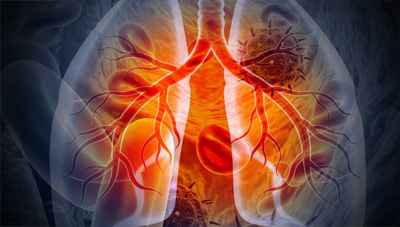
Blog
Lung Cancer: Unveiling Causes, Symptoms, Diagnosis, and Treatment
Understanding Lung Cancer
Definition: Lung cancer is characterized by uncontrolled cell growth in the lungs, with two primary types - Non-small cell lung cancer (NSCLC) constituting 85% and Small cell lung cancer making up the remaining 15%.
Causes
-
Genetic Mutations:
- Autoimmune Dysfunction: The immune system erroneously attacks the synovium, leading to cancer.
- Synovial Inflammation: Thickening of the synovium causes joint pain, tenderness, and stiffness.
-
Predisposing Factors:
- Age: Older individuals with more cell mutations are at higher risk.
- Smoking: A major risk factor, damages lung cells, and increases mutation chances.
- Family History: Genetic mutations passed from parent to child increase risk.
- Exposure to Elements: Asbestos, radon, and heavy metal exposure may elevate risk.
- Lung Diseases: Pre-existing conditions like pulmonary fibrosis or COPD increase susceptibility.
Symptoms
-
Common Indicators:
- Persistent Cough: Having a cough that has lasted longer than three weeks.
- Breathlessness: Having difficulty breathing due to the lack of oxygen.
- Chest or Shoulder Pain: There is a feeling of discomfort in the chest or shoulder area.
- Chest Infections: Persistent or recurring infections.
- Coughing Blood: Hemoptysis.
-
Additional Signs:
- Fatigue: Pronounced tiredness.
- Unintentional Weight Loss: When a person loses weight without any explanation.
- Difficulty Swallowing: Impaired swallowing ability.
- Hoarse Voice: Changes in voice quality.
Risk Factors
-
Age and Gender:
- Age: Risk increases with age.
- Gender: More prevalent among women.
-
Lifestyle Choices:
- Smoking: Primary risk factor, damages lung cells.
- Passive Smoking: Second-hand smoke exposure increases risk.
-
Genetics:
- Family History: Higher risk with a family history of lung cancer.
- Genetic Mutations: Specific mutations passed on from parent to child.
-
Environmental Exposure:
- Asbestos, Radon, Heavy Metals: Prolonged exposure elevates the risk.
-
Health Conditions:
- Pre-existing Lung Diseases: Conditions like pulmonary fibrosis or COPD increase susceptibility.
When to Seek Medical Attention
-
Immediate Action:
- Presence of new and concerning symptoms.
- Particularly vital if risk factors like lung disease history, family history, or smoking are present.
Diagnosing Lung Cancer
-
Medical Assessment:
- General Health Inquiry: Doctor's questions about overall health and medical history.
- Physical Examination: Examination of ears, nose, throat, and physical assessment.
- Blood Tests: Evaluation of general health and organ function.
- Imaging Scans: X-rays and CT scans are used to detect cancer signs.
- Lung Function Tests: Spirometry to assess lung function.
-
Specialized Tests:
- Bronchoscopy: Examination of the trachea and large airways for abnormalities.
- Biopsy: Taking a sample of lung cells to determine whether they are cancerous.
Treatment Options
-
Varied Approaches:
- Surgery: Removal of cancerous tissue - lobectomy, pneumonectomy, or wedge resection.
- Radiotherapy: Damages cancer cells to inhibit growth.
- Chemotherapy: Using potent drugs to kill cancer cells.
- Targeted Therapy: Medication targeting specific cancer features.
- Immunotherapy: Enhancing the immune system to identify and eliminate cancer cells.
-
Curative vs. Palliative:
- Curative Treatment: Aimed at the complete cancer removal.
- Palliative Care: Focused on symptom relief and improving quality of life.
Prevention
-
Risk Mitigation:
- Avoiding Smoking: Primary preventive measure.
- Limiting Asbestos Exposure: Reducing contact with environmental risk factors.
Complications and Side Effects
-
Potential Complications:
- Breathing Issues: Shortness of breath due to lung function impairment.
- Pleural Effusion: Fluid build-up around the lungs.
- Appetite and Weight Changes: Impact on eating habits and weight.
- Fatigue and Sleep Disturbances: Persistent tiredness and sleep difficulties.
-
Metastasis Awareness:
- Spread of Cancer: Ongoing monitoring for potential metastasis.
Conclusion
In conclusion, lung cancer is a multifaceted condition demanding a comprehensive understanding of its causes, symptoms, and treatment options. Early detection and prompt medical attention significantly impact prognosis. By embracing a proactive approach to risk reduction, regular screenings, and adherence to recommended treatments, individuals can navigate lung cancer complexities with increased resilience. The collaborative efforts of patients, medical professionals, and support systems play a pivotal role in managing and overcoming lung cancer.